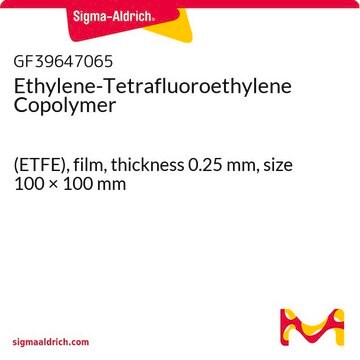GF63377017
Lanthanum
rod, 100mm, diameter 6.35mm, cast, 99%
Synonym(s):
Lanthanum, LA007910
About This Item
Recommended Products
Assay
≥99%
form
rod
manufacturer/tradename
Goodfellow 633-770-17
resistivity
54 μΩ-cm
L × diam.
100 mm × 6.35 mm
bp
3464 °C (lit.)
mp
920 °C (lit.)
density
6.19 g/mL at 25 °C (lit.)
SMILES string
[La]
InChI
1S/La
InChI key
FZLIPJUXYLNCLC-UHFFFAOYSA-N
Looking for similar products? Visit Product Comparison Guide
General description
Legal Information
Storage Class Code
4.3 - Hazardous materials which set free flammable gases upon contact with water
WGK
WGK 3
Flash Point(F)
Not applicable
Flash Point(C)
Not applicable
Certificates of Analysis (COA)
Search for Certificates of Analysis (COA) by entering the products Lot/Batch Number. Lot and Batch Numbers can be found on a product’s label following the words ‘Lot’ or ‘Batch’.
Already Own This Product?
Find documentation for the products that you have recently purchased in the Document Library.
Our team of scientists has experience in all areas of research including Life Science, Material Science, Chemical Synthesis, Chromatography, Analytical and many others.
Contact Technical Service




